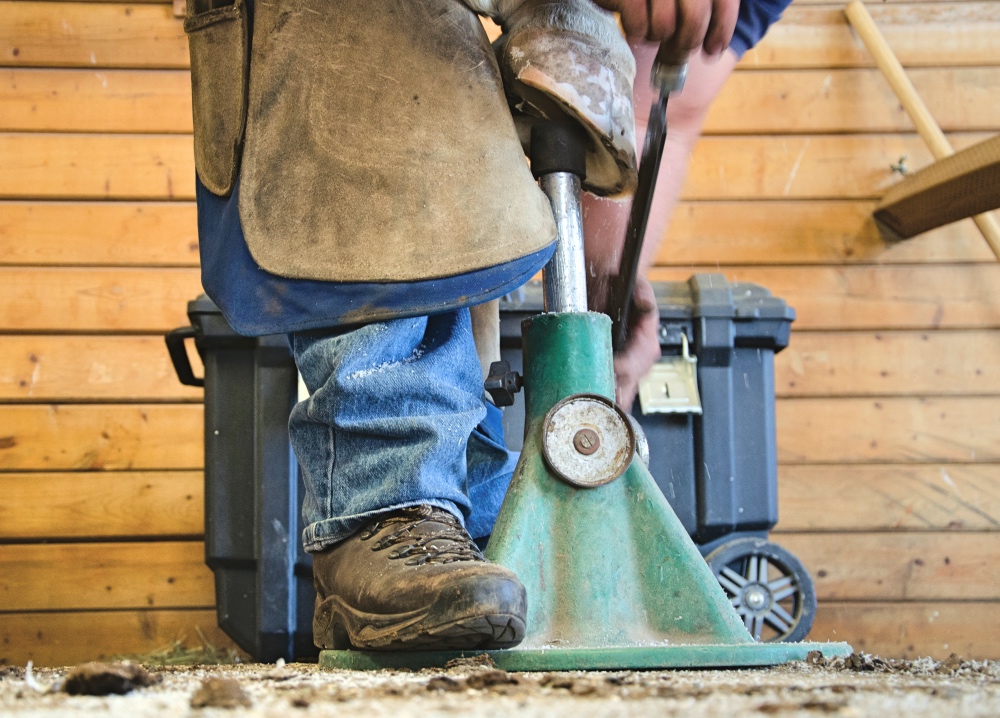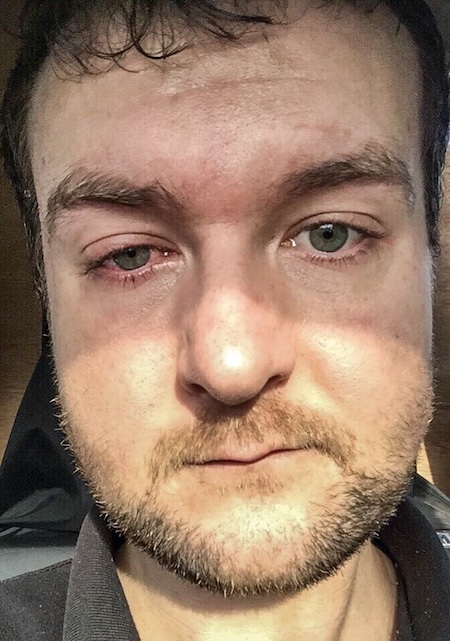The past year has been interesting, to say the least.
While the COVID-19 pandemic has resulted in restrictions in our daily lives, it also has been one of the busiest years within the farrier industry as horse owners spent more time with their mounts. With increased business comes a greater need for hoof-care education. As the year comes to a close, American Farriers Journal editors compiled the articles that you read most from each month in 2020.
1. Former Montana State University Farrier School Director Bryce Kawasaki Passes Away
Former Montana State University Farrier School Director Bryce Kawasaki passed away.
 Kawasaki graduated from the MSU Farrier School in 1994. After this training, he started working with several American Farrier’s Association Certified Journeyman Farriers. Kawasaki has had his own farrier business for many years. More than half of the shoes that he applied were made by him in his shop or at the horse.
Kawasaki graduated from the MSU Farrier School in 1994. After this training, he started working with several American Farrier’s Association Certified Journeyman Farriers. Kawasaki has had his own farrier business for many years. More than half of the shoes that he applied were made by him in his shop or at the horse.
2. Pricing for Trimming and Shoeing | Farriers' Horse Ownership
Nationally, the typical full-time U.S. farrier charges $131.46 for a trim and nailing on four keg shoes while part-time farriers charge an average of $94.49 for the same work.
Some 94% of U.S. farriers are not only involved with the footcare needs of numerous horses, but they and their immediate families also own horses, ride and/or compete in many different events.
3. Hoof-Care Highlights: The Week of November 15
Each day, American Farriers Journal encounters a variety of articles, social media posts, podcasts and videos that offer a unique look at an aspect of the equine industry. Our favorite content for "This Week" is aggregated here. We hope it offers a useful tip to improve your hoof-care business, expands your knowledge by giving you something new to ponder, or entertains you when you need a break most.
4. Alfalfa and the Insulin Resistant Horse
Alfalfa can be an excellent addition to most horses’ diets, even for those that are insulin resistant.
Equine nutritionist Juliet Getty often recommends feeding it because it boosts the overall protein quality of a grass-hay diet and, in general, enhances the horse’s muscle tone, immune system and overall health. Some people, though, just don’t want to feed alfalfa — they believe it causes laminitis. After years of working with horses, it appears that it may, in fact, lead to laminitis in some horses.
5. The Making of a Stand

Farriery is an ancient profession, to be sure. While balancing hooves with a trim and nailing on shoes remain the foundational tasks, there have been considerable advances in the industry. Many times, significant sacrifices are made to bring innovations to the farrier market. Some are more significant than others.
It’s not a matter of if a farrier will get hurt, it’s a matter of when. Sure, it’s a bit of a cliché; it’s true nonetheless. For one young Idaho shoer, it came sooner rather than later — in his first year, as a matter of fact. Kevin Keeler was working on a horse’s left hind foot when it happened.
“It’s really hard to describe it,” he tells American Farriers Journal. “You almost have to pantomime it. He stepped on my left foot, which nailed me to the ground. Then he hopped up in the air and put his left hind foot on the inside of my right knee and stepped down.”
6. Copper Sulfate Use by Farriers Raises Safety Concerns

When providing hoof care on a regular schedule, many farriers see horses every 6 to 8 weeks and the nature of the footcare business is to provide a solution that works best for a horse within that interval. Yet, bacterial- and fungal-induced diseases such as thrush often thwart those best intentions.
A remedy traditionally has been a mixture of copper sulfate and water to form a paste, packing the compound into the infected area of the hoof. The solution, according to those who utilize the compound, has worked in their practices and provided a cost-effective treatment to the thrush cases they see regularly. Conversely, other professionals deem the practice unsafe for both horse and farrier, and also cite environmental concerns.
7. This Farrier Takes a Beating
All horseshoers know that what they do for a living is hard on their bodies, but most choose to ignore the fact. Younger shoers want to shoe more horses and spend more of their pay without worry, but most older shoers will admit they wish when they were younger that they had paid more attention to the physical toll the job takes.
Farriers are used to hearing customers make claims such as “I’d trim my horses myself if my back was as good as yours.” The truth, however, is that horseshoers do not have invincible bodies. They’re just able to ignore and endure the everyday pains that go with the job.
8. Hoof-Care Highlights: The Week of November 8
Each day, American Farriers Journal encounters a variety of articles, social media posts, podcasts and videos that offer a unique look at an aspect of the equine industry. Our favorite content for "This Week" is aggregated here. We hope it offers a useful tip to improve your hoof-care business, expands your knowledge by giving you something new to ponder, or entertains you when you need a break most.
9. Can’t horses be fed hay free-choice?
I caution against the stress of forage restriction. Some have said free choice forage feeding leads to increased obesity and an increased risk of laminitis. They are mistaken.
During a harsh winter, when the food supply is sparse, wild horses hold on to body fat to help them survive. They do this by having an elevated blood insulin level. When insulin levels are high, the cells cannot release fat.
10. Sugardine — A Stinky, Gooey Mess That Works When Treating Wound Injuries
Sugardine is simply a paste of granulated white sugar and betadine solution or scrub mixed to a toothpaste or peanut butter consistency, and it is a remarkably safe and effective wound dressing.
It’s so simple that people can’t believe that it actually works until they see it firsthand. Then afterward, they can’t believe no one ever taught them about sugardine.







Post a comment
Report Abusive Comment